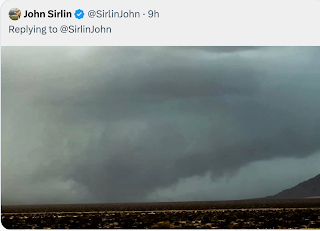Creating an Entirely New Science: Forecasting Illness, Part III
In Part I and II of this three-part series, I explained Ascel Bio and its goal to create an entirely new science: that of forecasting outbreaks of disease before they occur. In a number of ways, it is like weather forecasting.
The people of
the United States benefit from having a National Weather Service (NWS) that
provides – free of charge* – weather forecasts and storm warnings for the
public at large that anyone may use if they wish to do so.
In order to create
those forecasts and warnings, the NWS has to collect voluminous data and
process it. Under U.S. law, that data is available to anyone who wants it.
Specifically,
their policy states:
NOAA
will carry out activities that contribute to its mission, including conducting
research; providing environmental assessments; collecting and archiving data;
ensuring their quality; issuing forecasts, warnings, and advisories; and providing open and unrestricted access
to publicly-funded observations, analyses, model results, forecasts, and
related information products in a timely manner and at the lowest possible
cost to users.
As a result of
that policy, the U.S. public can get free weather information from the National
Weather Service or, if they prefer, from AccuWeather.com or a host of other
private-sector providers of weather forecasts and related information.
Companies like
AccuWeather Enterprise Solutions take the NWS’s meteorological infrastructure
and add additional data, computer models, and other expertise and use them to
create specifically-tailored products for specialized users. For example, a
year ago today we told both railroads that serve Joplin the tornado was coming
in plenty of time for them to move a train out of the storm’s path. No only did
the railroad benefit, the people of Joplin benefited by having one less thing
to clean up, not to mention the safety of the train’s crew.
The NWS/NOAA
policy of unrestricted access to data has been of great benefit to the United
States.
Unfortunately, this enlightened view does not
extend throughout the federal government. In parts I and II of this
introduction to Ascel Bio and our disease forecasts, we’ve talked about the
parallels to weather forecasting. Here, the parallels continue: Today’s U.S.
Centers for Disease Control and Department of Health and Human Services
resemble the National Weather Service (then called the U.S. Weather Bureau) in
the 1950’s and do not automatically share data paid for by the taxpayers of the
U.S. Some of the reasons were exactly the ones we heard in the 1950’s (see: Warnings: The True Story of How Science Tamed the Weather)!
As with storm warnings, GPS, and numerous other
types of federal data, the economy grows when data is shared rather than
hoarded. We are hopeful we can get these agencies to adopt policies like
NOAA’s that will promote the public health while allowing the economy to grow.
I’m
excited about the potential of this new endeavor to save lives and make all of
us healthier. Hope you have enjoyed learning about it.
*other than the
taxes we all pay





Comments
Post a Comment